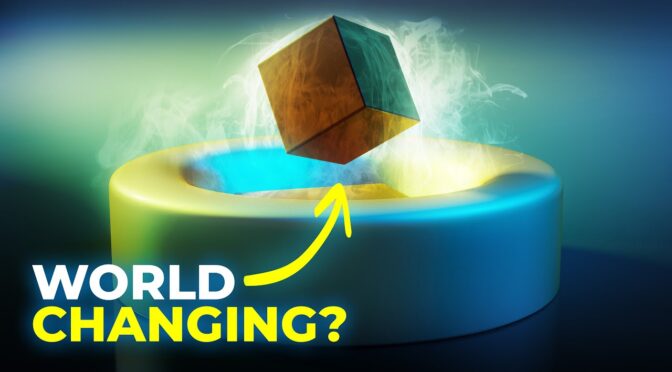Based on the video titled “The Incredible Potential of Superconductors” by Real Engineering, this article aims to shed light on the fascinating yet elusive world of superconductors. The video delves into the science behind superconductors, their current applications, and the challenges that researchers face in making them more accessible and efficient.
Contents
- The Allure of Room-Temperature Superconductors
- The Science Behind Superconductors
- Practical Applications and Limitations
- The Controversy Surrounding LK 99
- The Future of Superconductors
- The Complexity of Electrical Grids
- The video
The Allure of Room-Temperature Superconductors
The video begins by discussing the recent buzz around LK 99, a material claimed to be a room-temperature superconductor. Superconductors are materials that allow electrons to move without resistance, making them ideal for lossless energy transfer. While existing superconductors require extremely low temperatures to function, a room-temperature superconductor could revolutionize various industries, from healthcare to transportation. The video also touches on the potential for a global, lossless energy grid, which could solve the intermittency issues associated with renewable energy sources.
The Science Behind Superconductors
Superconductors work by allowing electrons to form pairs, known as Cooper pairs, which move without resistance. This phenomenon occurs at temperatures close to absolute zero, where the vibrations of the crystal lattice in the material are minimal. The video explains that while many elements and compounds exhibit superconductivity at low temperatures, the mechanism behind high-temperature superconductors, particularly those made from ceramic materials, remains not fully understood.
Practical Applications and Limitations
Superconductors are already in use in MRI machines and maglev trains, but their application on a larger scale is hindered by the need for extreme cooling. The video highlights a project in South Korea where high-temperature superconducting cables were used to connect two substations. Despite the success, the high cost of these cables and the need for specialized cooling systems make them economically unfeasible for widespread use.
The Controversy Surrounding LK 99
The video scrutinizes the claims surrounding LK 99, a material initially touted as a room-temperature superconductor. Multiple labs attempted to replicate the findings, but the results were inconsistent. Further investigation revealed that LK 99 is not a superconductor but has some interesting diamagnetic properties. The video suggests that the rush to publish findings and the lack of peer review often lead to false claims in the scientific community.
The Future of Superconductors
While the video acknowledges that we are still in the early stages of understanding superconductors, it emphasizes the transformative potential they hold. High-temperature superconductors, despite their limitations, are finding applications in densely populated urban areas where the demand for electricity is high. As research progresses, the costs are expected to decrease, making superconductors more accessible.
The Complexity of Electrical Grids
The video concludes by discussing the intricacies of electrical grids, describing them as the world’s largest machines. It mentions that the field is constantly evolving, offering numerous job opportunities in areas like energy commodity trading. The video also recommends educational resources for those interested in learning more about this rapidly evolving field.
The video
The video serves as a comprehensive guide to the current state of superconductors, offering a balanced view of their potential and the challenges that lie ahead. It provides a sobering reminder that while the future of superconductors is promising, much work remains to be done to make them a practical and economical choice for widespread use.

